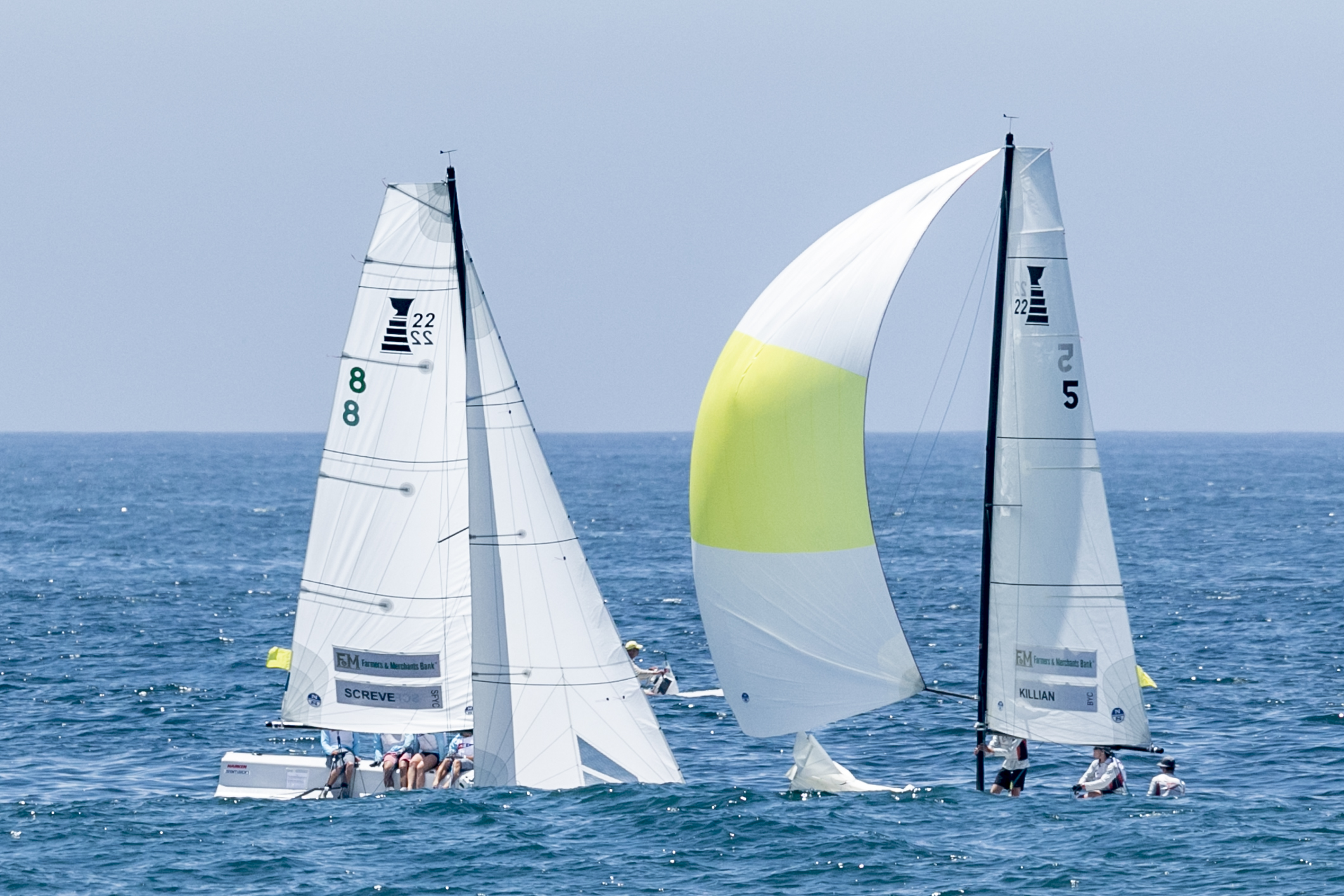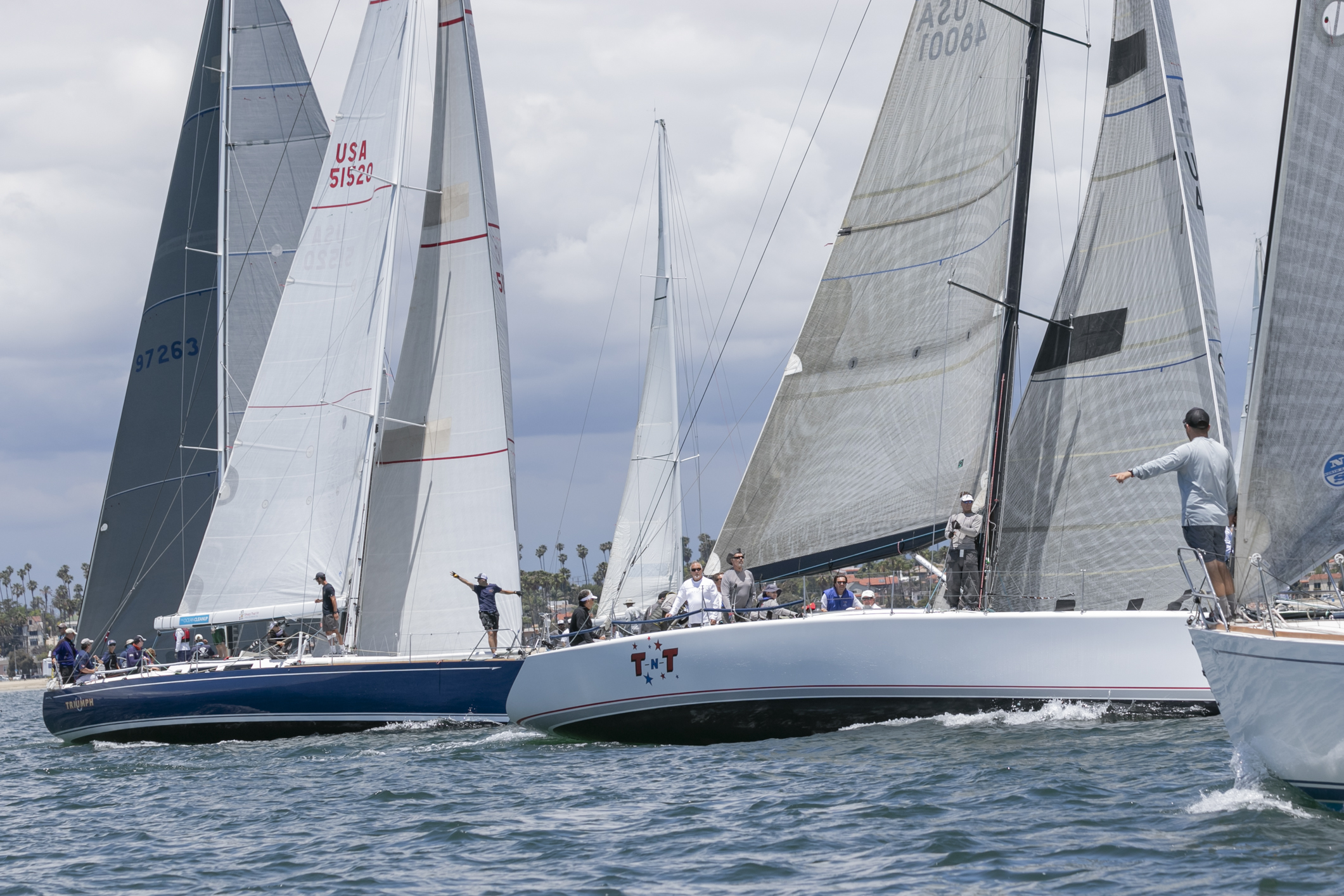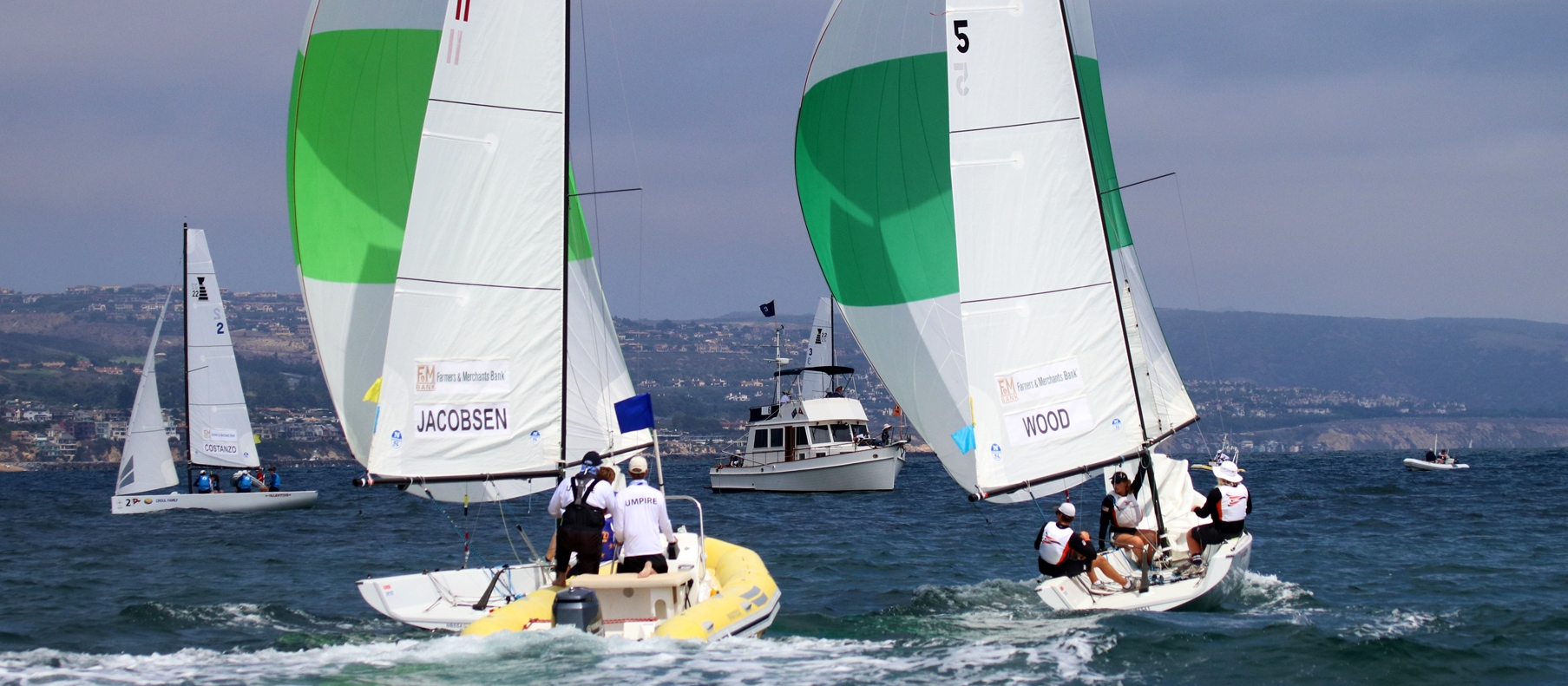Ahoy!
The whales are here and whale watching is excellent this year, with boaters reporting sightings directly off Newport’s coast.
I am accustomed to seeing whales during yacht deliveries, especially when I am cruising just south of San Francisco or inPacific Northwest waters. But whales are curious creatures, and from time to time, one will take a detour to swim inside Newport Harbor. A stray whale in the harbor is always a sight to see, and I have had some of my best whale-watching expeditions without ever leaving the harbor, or shore for that matter.
At the moment, the whales that are playing offshore include the Blues, Humpbacks, Fins, and a couple of Minkes, and I have heard huge pods of dolphins are being spotted. I have been cruising on many occasions when the dolphins would surround my yacht to swim in the bow wake and to jump in the trailing wakes.
The dolphins love to swim next to a boat, and some of the pods are huge, with more than 1,000 Delphinus delphus swimming and jumping together. (Remember, whales and dolphins are warm-blooded, air-breathing mammals that swim in pods, not schools like fish.)
If you are planning to take your boat to see the whales then you must follow the regulations that have been enacted to protect the critters from over-excited or disrespectful boaters. The National Marine Fisheries Service is the federal agency responsible for protecting the whales since the passage of the 1972 Marine Mammal Protection Act. The regulations were enacted to protect whales and other marine mammals from harassment, and for safe, non-disruptive whale watching. I hope every boater follows the general rules, and you can report someone you see blatantly disregarding the regulations.
The Marine Mammal Protection Act cites two levels of harassment and prohibits hunting, capturing or killing any marine mammal, so put your BBQ away. The level A harassment is to injure a marine mammal or marine mammal stock in the wild, and level B harassment is to disturb a marine mammal or marine mammal stock in the wild by disrupting behavioral patterns.
I follow the information on NOAA Fisheries’ “Responsible Marine Wildlife Viewing” website that is at http://www.nmfs.noaa.gov/pr/education/viewing.htm. This site has a great overview, ocean etiquette, and guidelines by regions.
Whether you are a recreational boater, a commercial whale-watching operator, or a kayaker, everyone must abide by the rules. You must try to stay 100 yards away from any whale, and if a whale approaches closer, then you must stop or cruise slowly to maintain steerage. While viewing a pod, boaters shouldn’t operate at speeds faster than a whale or group of whales, and boaters should maintain a constant speed while paralleling. You should avoid following or approaching directly in front of whales with your vessel.
Also, boaters should do nothing to cause a whale to change direction, separate from groups, or block a whale between your boat and shore, such as a cove. In addition, aircraft pilots cannot fly lower than 1,000 feet when within a 100-yard horizontal distance from a whale. Swimmers and divers cannot approach whales either.
And never try to feed a whale.
If you see a boater deliberately harassing a whale, report the incident to the National Marine Fisheries Service’s 24-hour hotline at (800) 853-1964 or your local Coast Guard office. Every boater must be considerate to the mammals because, remember, we are playing in their home.
Tip of the week is if you are thinking of visiting Avalon in the near future, then you may want to catch a ride now aboard the Catalina Flyer before she heads north to the state of Washington temporarily. The catamaran is making the long trek to have her engines replaced as required by California Air Resources Board’s commercial harbor craft regulations.
Bob Black, Catalina Flyer’s former owner and now general manager, is actively searching for a replacement vessel while the boat is away, but there are not many U.S. Coast Guard certified passenger ferries waiting to be leased. If Bob cannot find a temporary replacement vessel then Newport will not have passenger service to Catalina Island until the Flyer returns, and that might not be until February 2011.
The absence of this passenger ferry will have a negative effect on the local economy through the loss of hundreds of visitors who would normally be using the ferry and the surrounding businesses. Not to mention that the ship’s crew will not be earning a paycheck when the boat is in the shipyard, but maybe other local charter boat companies can utilize the crew in the interim.
And don’t forget: Tune in to the No. 1 boating radio talk show in the nation, Capt. Mike Whitehead’s Boathouse Radio Show, broadcasting coast-to-coast on the CRN Digital Talk Radio syndicated network every Saturday at noon, Pacific Time. Join Chandler Bell and me as we talk about “all things boating,” and news reporter Matt Prichard will be returning soon. You can find the station listings, cable TV channels, live streaming on the Internet, and now available are apps to listen to the show for your iPhone, Blackberry, iTouch, Android, Palm, and Windows Mobile at www.BoathouseTV.com or www.BoathouseRadio.com.
Until next week, Safe Voyages!




